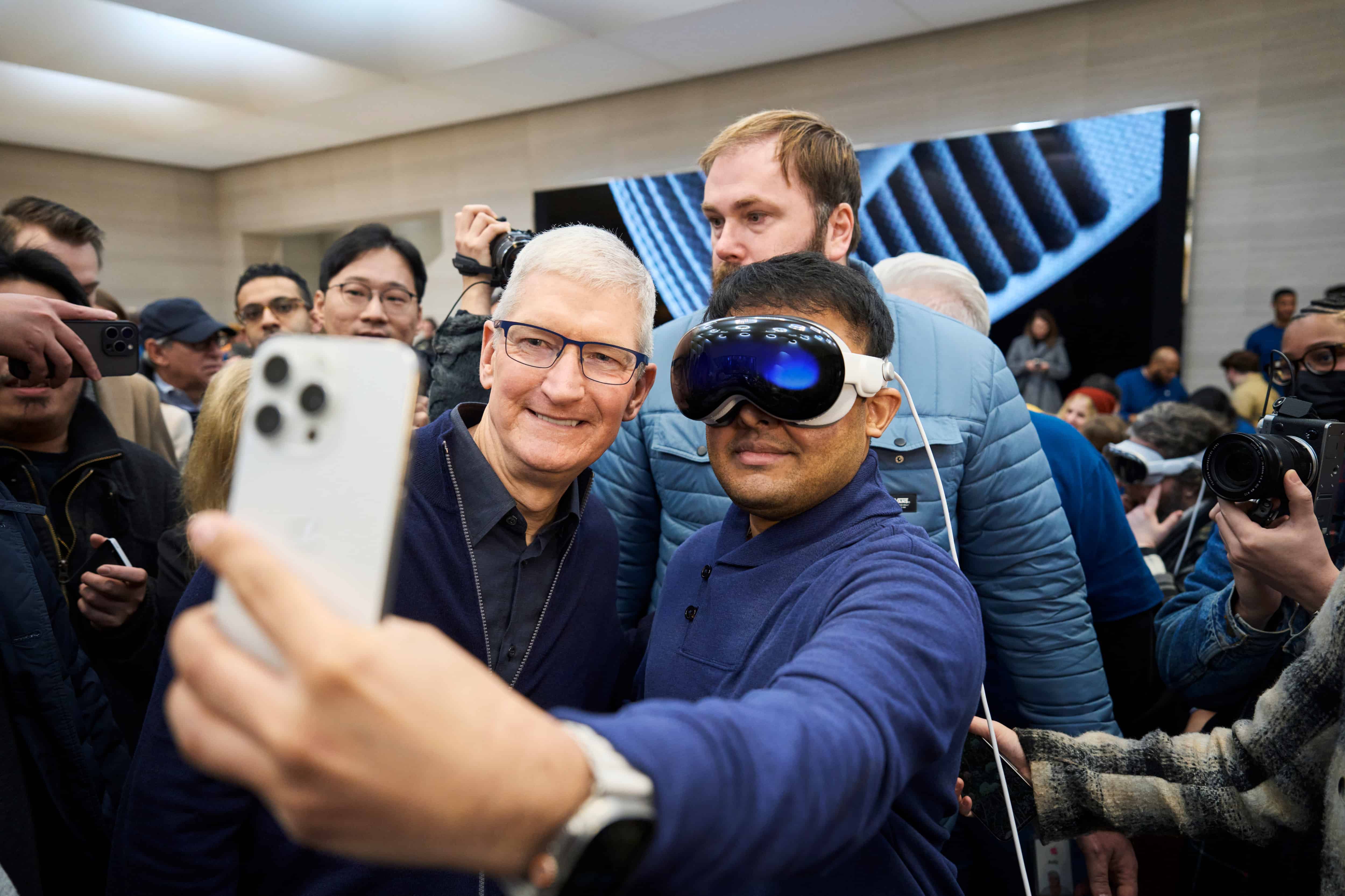
At the beginning of February, Apple began selling its Vision Pro VR glasses. There are still relatively few applications that utilize the power of the new technology, but the number is increasing. Initial tests are promising, and early adopters are largely enthusiastic – even though the price of the innovation seems astronomical.
However, against the backdrop of other technologies, such as the introduction of flat plasma televisions, the entry-level price pales into insignificance. These cost around 13,000 euros in 1999 – which meant that only 1,000 units were sold that year. But back to the Vision Pro.
When you can see your surroundings
The difference to conventional VR glasses is that you actually have a clear view of what is happening around you. The pass-through technology seems to be so good that you sometimes seem to forget that you are behind oversized diving goggles. Of course, the environment perceives this very differently.
Immersive experience
The immersive experience, which even suggests three-dimensionality thanks to clever sensor technology and high-resolution monitors, goes so far that you can “beam” yourself to other planets.
Abusal tester and “Darwin Award”
But as is always the case when new technologies come onto the market, there is also a group of people who come up with completely absurd ideas. As the Apple Vision Pro is the first VR headset of this quality that even displays the environment with the slightest delay, the first “Darwin Award contenders” have come up with the idea of using the headset while driving. Behind the wheel, mind you.
Tesla’s FSD Beta & Cybertruck
So far, there are only a few vehicles that show convincing autonomous approaches. Teslas with FSD Beta (Full Self Driving) can drive autonomously within certain limits. A few early adopters took this as an opportunity to drive around with the Vision Pro and a Cybertruck. The “posers” got a real “kick” out of it.
What is a real thigh-slapper on TikTok or X and generates tens of thousands of clicks is, of course, completely out of the question in practice. Some even let themselves be guided by the internal Apple map app, a hardly convincing use, because a normal head-up display (which, piquantly, is not available in the Tesla) does the job far better in this context.
A skateboarder who was out and about in San Francisco with an electric version found a relatively quirky “application”. Definitely a candidate for the “Darwin Award” when fate strikes in the form of another road user, preferably a pickup truck.
So is the Apple Vision Pro dangerous?
No. But you obviously can’t force people to think in a straight line. And a few people have to prove time and again that risk and fear (and, as a consequence, their own and other people’s lives) can be conquered.
There is a sentence attributed to Albert Einstein: “Two things are infinite, the universe and human stupidity, but I’m not quite sure about the universe yet.”
No matter how clever a technology is, there is simply no such thing as foolproof.

